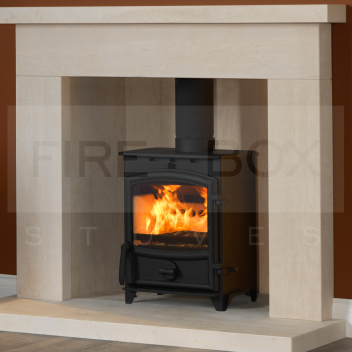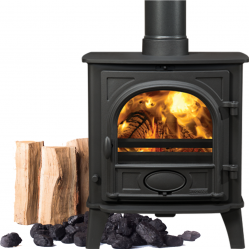This will depend entirely on the size of the room, the location of the stove within the house and how well the house is insulated. There is a guideline calculation to help you find this out: measure the room (length x width x height) and multiply these figures. Divide this figure by 14 and this will give you the nominal heat output. If your room is poorly insulated or without double glazed windows, divide the figure by 10. Similarly, if your house is new-build and the room is very well insulated, divide the figure by 25 to achieve your nominal output.
Be aware that many stove manufacturers offer a ‘nominal’ output, and this will have an output range (for example, if you have a 5kW nominal output stove, it will have a range of about 3-7kW, depending on the amount of fuel used and the positioning of the air controls). You will also find that there are often different sized stoves with the same nominal output. This is due to the size of the firebox inside the stove and the amount of fuel used to measure the output. If the same amount of fuel is used to measure the output but in different sized fireboxes, there will inevitably be the same output. Be aware of this when choosing your stove, as having a stove with a large firebox but only loading it with a small amount of fuel will cause problems during the combustion process and will result in the air wash not working properly. Similarly, if you buy a small stove and fill it to the brim with fuel, you will cause problems due to overfiring, which will result in damage to your stove, baffle and/ or flue system as well as the potential risk of a chimney fire.
There are also limitations regarding the positioning of the stove, either freestanding in a room or in an opening. These are known as ‘distances to combustibles and non-combustibles’ and will vary with each manufacturer. As a general rule, there should be a minimum of 100-150mm to non-combustible materials, such as brick. This is to ensure good airflow around the stove, allowing heat to radiate out into the room. If this is not achieved, brickwork and plaster around the stove can crack due to excessive heat, and most of the heat will be lost up the chimney.
If you are in any doubt and need help choosing the right size stove for your room, come and talk to us at Firebox Stoves and can provide you with friendly, expert advice.






